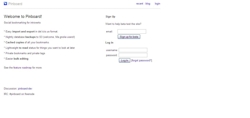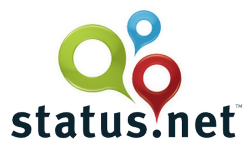It is amazing that we would come full circle from where we were when we started with Twitter in January of 2009. When we began using Twitter, part of the appeal was as a real-time replacement for RSS reading. But, recently, we’ve returned to RSS feed reading as a much more reliable manner of ensuring we get our news.
That does not mean Twitter is not still a big part of our news delivery, but it has become overwhelming. But if your feed consists of nothing but your news feed piped into Twitter, then we will now go back to following you in Google Reader. We will now take advantage of the greatest benefit of Twitter to someone looking to get news and information…curation. The most valuable stories will float to the top as people tweet them.This will make Twitter much more social for us.
In January, an article made the rounds, maintaining that RSS was being ignored, and we should be worried. Google Chrome has no native RSS support built in, Mozilla is killing off the RSS icon in Firefox 4.0. How RSS integrated into systems may need to be rethought. Google Reader is all well and good, but that is a website, not a browser. That same article has some good suggestions.
- Why can’t, when you visit a blog article, the browser reads the comments RSS, and when you next come back to that article, it can tell you that there have been new comments since, and highlight them on the page?
- Why do we go through the same daily routine of checking certain sites over and over again? Can’t our computers be more intelligent here? Isn’t the purpose of the computer / browser to save us time!? Why doesn’t the browser, when you open it, tell you how many new items there are, on what sites you commonly visit, without you having ever configured this?
Dan Frommer, on Business Insider, countered that RSS is not dying, normal people never used it. In his opinion, RSS is a fine backend technology. In fact, many who moved to Twitter are reading feeds pumped to Twitter from RSS. That using RSS in an RSS reader has never been mainstream, which is valid. O’Reilly points out, as a backend technology, RSS never blocks you or goes down.
We wanted there to be a Twitter alternative, and there very well might be. Twitter is a stream. Twitter Lists would allow everything to be neatly organized in an intuitive way, but the issue is that there is no adequate solution to reading longer and in-depth on your desired sources for Twitter. There is paper.li and the Twitter Times. There are social feed readers. We will be exploring these at some future point for discussion. But magazine/newspaper like feed readers seem to be the rage right now.
What do you think?
Related articles
- RSS is Not Dead. The Concept of “Subscribing” Is. (staynalive.com)
- Percolater: A Visual Take On Feed Reading (macstories.net)











![Reblog this post [with Zemanta]](http://img.zemanta.com/reblog_e.png?x-id=79327adc-7711-4d92-afd9-3cff096c45fd)
![Reblog this post [with Zemanta]](http://img.zemanta.com/reblog_e.png?x-id=7dcfe0ac-cbec-4a96-b7da-82d83aef6fe2)